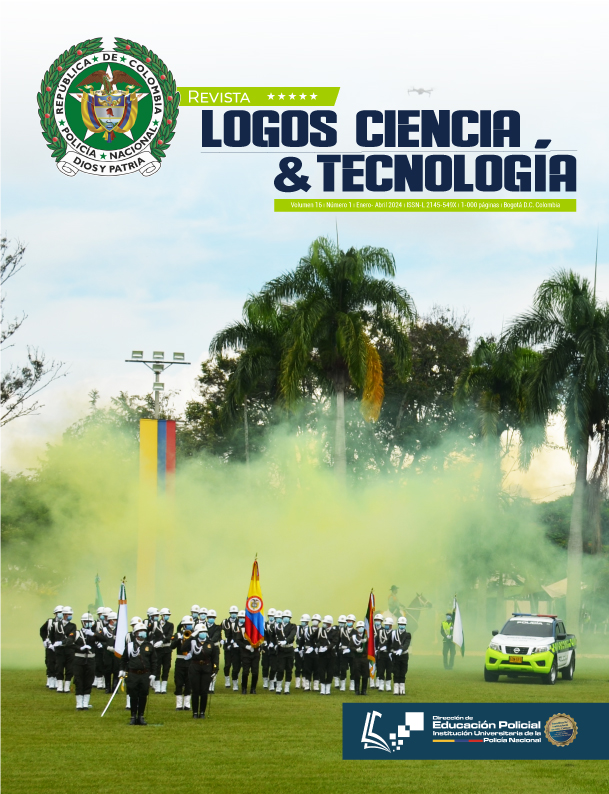Influencia cultural en la motivación sexual de los asesinos seriales
DOI:
https://doi.org/10.22335/rlct.v16i1.1908Palabras clave:
Asesinato serial, motivación sexual, influencia cultural, indulgencia, restricciónResumen
Partiendo de la literatura que expone que la mayoría de los asesinatos seriales son cometidos por hombres y con motivación sexual, la investigación es un abordaje preliminar que tiene como objetivo realizar una aproximación a la influencia cultural en la motivación sexual de los asesinos en serie. Se analizaron 86 casos de asesinatos seriales con autores masculinos de distintos países, cometidos entre 1900 y el 2020. Las variables evaluadas se relacionan con el agresor, la victimología, el modus operandi, la tipología de motivación sexual y las acciones relacionadas con tal clasificación. En países de cultura indulgente, los actos mayoritarios son los sexuales pre mortem (44.20%), interferencia con el cuerpo de la víctima (36%) y mutilación (27.90%); de igual manera, ocurre en países de cultura restrictiva, aunque en menor porcentaje, siendo la mutilación (7%) la única variable estadísticamente significativa (X2 = 0.034). La motivación directo-sádica es la más presente, siendo de 52.30% en la indulgencia y de 18.60% en restrictivos, existiendo una relación significativa (X2 = 0.026). Existe una influencia parcial de la cultura en el modus operandi y la motivación sexual según la mayor o menor presencia de normas sociales y cómo influyen en la toma de decisiones del individuo.
Descargas
Referencias
Bathaee, A. (2014). Consumer culture and purchase behaviors: Analyses of anticipated regret, variety-seeking and quality-consciousness in Germany and Iran [Tesis doctoral]. Universidad de Greifswald.
Beauregard, E., & Martineau, M. (2016). The sexual murderer: Offender behaviour and implications for practice. Routledge. https://doi.org/10.4324/9781315683768
Beauregard, E., & Proulx, J. (2002). Profiles in the offending process of nonserial sexual murderers. International Journal of Offender Therapy and Comparative Criminology, 46(4), 386-399. https://doi.org/10.1177%2F0306624X02464002
Beech, A., Fisher, D., & Ward, T. (2005). Sexual murderers’ implicit theories. Journal of Interpersonal Violence, 20(11), 1366-1389. https://doi.org/10.1177/0886260505278712
Bond, M. H. (1988). Finding universal dimensions of individual variation in multicultural studies of values: The Rockeach and Chinese value surveys. Journal of Personality and Social Psychology, 55(6), 1009-1015. https://doi.org/10.1037//0022-3514.55.6.1009
Carter, A. J., & Hollin, C. R. (2014). Assessment and treatment when sex is attached to a killing: A case study. In D. T. Wilcox, T. Garett, & L. Harkins (Eds.), Sex offender treatment (pp. 286-304). John Wiley & Sons, Ltd. https://doi.org/10.1002/9781118674352.ch16
Carter, A. J., Hollin, C. R., Stefanska, E. B., Higgs, T., & Bloomfield, S. (2017). The use of crime scene and demographic information in the identification of nonserial sexual homicide. International Journal of Offender Therapy and Comparative Criminology, 61(14), 1554-1569. https://doi.org/10.11772F0306624X16630313
Chan, H. C., & Heide, K. M. (2009). Sexual homicide: A synthesis of the literature. Trauma, Violence, & Abuse, 10(1), 31-54. https://doi.org/10.11772F1524838008326478
Clarke, J., & Carter, A. J. (2000). Relapse prevention with sexual murderers. In D. R. Laws., S. M. Hudson., & T. Ward (Eds.), Remaking Relapse Prevention with Sex Offenders: A Sourcebook, (pp. 389-401). SAGE Publications, Inc. https://doi.org/10.4135/9781452224954.n22
Ferreira, V. I. (2020). ¿Es posible reconocer a un asesino serial? [Tesis doctoral]. Universidad de la República de Paraguay.
Fisher, D., & Beech, A. R. (2007). Identification of motivations for sexual murder. In J. Proulx, E. Beauregard, M. Cusson, & A. Nicole (Eds.), Sexual murderers: A comparative analysis and new perspectives (pp. 175-190). John Wiley.
Heydari, A., Laroche, M., Paulin, M., & Richard, M. O. (2021). Hofstede’s individual-level indulgence dimension: Scale development and validation. Journal of Retailing and Consumer Services, 62, 102640. https://doi.org/10.1016/j.jretconser.2021.102640
Hickey, E. W. (2015). Serial murderers and their victims. Cengage Learning.
Hofstede, G. (2001). Culture’s consequences: Comparing values, behaviors, institutions and organizations across nations. Sage Publications.https://doi.org/10.1016/S0005-7967(02)00184-5
Hofstede, G. (2011). Dimensionalizing cultures: The Hofstede model in context. Online Readings in Psychology and Culture, 2(1).
Hofstede, G., & McCrae, R. R. (2004). Personality and culture revisited: Linking traits and dimensions of culture. Cross-Cultural Research, 38(1), 52-88. https://doi.org/10.11772F1069397103259443
Hofstede, G. J., & Minkov, M. (2010). Culturas y organizaciones: software mental: cooperación intercultural y su importancia para la supervivencia. McGraw-Hill.
Hofstede, G., Hofstede, G. J., & Minkov, M. (2010). Cultures and organizations: Software of the mind (vol. 2). McGraw-Hill.
Ibáñez, A. (2016). ¿Propensión cultural al delito? Un enfoque criminológico sobre las dimensiones culturales de Hofstede. Revista de Derecho Penal y Criminología, 16, 413-440.
Isaacson, J. I., Jordaan, Y., & Van Heerden, G. (2018). The relationship between individual-level culture and consumer decision-making styles through consumer involvement. Journal of Retailing and Cosumer Services, 41, 112-120. https://doi.org/10.1016/j.jretconser.2017.12.003
Kerr, K. J., Beech, A. R., & Murphy, D. (2013). Sexual homicide: Definition, motivation and comparison with other forms of sexual offending. Aggression and Violent Behavior, 18(1), 1-10. https://doi.org/10.1016/j.avb.2012.05.006
King, G., Tanner, M. A., & Rosen, O. (2004). Ecological inference: New methodological strategies. Cambridge University Press. https://doi.org/10.1017/CBO9780511510595
Leung, K., Bhagat, R. S., Buchan, N. R., Erez, M., & Gibson, C. B. (2005). Culture and international business: Recent advances and their implications for future research. Journal of International Business Studies, 36(4), 357-378. https://doi.org/10.1057/palgrave.jibs.8400150
Martín, A. L. (2013). Las mujeres también matamos. Derecho y Cambio Social, 10(33), 18-24.
McCoy, S., Galletta, D. F., & King, W. R. (2005). Integrating national culture into IS research: The need for current individual level measures. Communications of the Association for Information Systems, 15(12), 211-224. https://doi.org/10.17705/1CAIS.01512
Minkov, M. (2007). What makes us different and similar: A new interpretation of the World Values Survey and other cross-cultural data. Klasika i Stil Publishing House.
Patterson, T. C., & Orwell, G. (1991). Early colonial encounters and identities in the Caribbean: A review of some recent works and their implications. Dialectical Anthropology, 16(1) 1-13. https://doi.org/10.1007/BF00247766
Petreca, V. G., Brucato, G., Burgess, A. W., & Dixon, E. (2021). Criminal cannibalism: An examination of patterns and styles. Aggression and Violent Behavior, 56, 101-531. https://doi.org/10.1016/j.avb.2020.101531
Pettigrew, M. (2020). The sexually sadistic properties of necrophilia, in the context of serial killing, a case study. Journal of Police and Criminal Psychology, 35(4), 472-479. https://doi.org/10.1007/s11896-019-09326-5
Rada, R. T. (1978). Psychological factors in rapists. In R. T. Rada, (Ed.), Clinical aspects of the rapist (pp. 21-58). Grune & Stratton.
Revitch, E., & Schlesinger, L. B. (1981). Psychopathology of homicide. Thomas C.
Rodríguez, L. M. (2022). La motivación en el asesinato serial. Revista de Criminología, Psicología y Ley (Cripsiley), (7), 3-67.
Schlesinger, L. B. (1996). The catathymic crisis, 1912-present: A review and clinical study. Aggression and Violent Behavior, 1(4), 307-316. https://doi.org/10.1016/S1359-1789(96)00003-1
Schlesinger, L. B. (2021). Sexual murder: Catathymic and compulsive homicides. CRC Press. https://doi.org/10.4324/9781003143727
Schwartz, S. (1994). The fallacy of the ecological fallacy: The potential misuse of a concept and the consequences. American Journal of Public Health, 84(5), 819-824. https://doi.org/10.2105/AJPH.84.5.819
Soares, A. M., Farhangmehr, M., & Shoham, A. (2007). Hofstede’s dimensions of culture in international marketing studies. Journal of Business Research, 60(3), 277-284. https://doi.org/10.1016/j.jbusres.2006.10.018
Søndergaard, M. (1994). Research note: Hofstede´s consequences: A study of reviews, citations and replications. Organization Studies, 15(3), 447-456. https://doi.org/10.11772F017084069401500307
Steenkamp, J. B. E. (2001). The role of national culture in international marketing research. International Marketing Review.
Stefanska, E. B., Carter, A. J., Higgs, T., Bishopp, D., & Beech, A. R. (2015). Offense pathways of non-serial sexual killers. Journal of Criminal Justice, 43(2), 99-107. https://doi.org/10.1016/j.jcrimjus.2015.01.001
Taras, V., Kirkman, B. L., & Steel, P. (2010). Examining the impact of culture’s consequences: A three-decade, multilevel, meta-analytic review of Hofstede’s cultural value dimensions. Journal of Applied Psychology, 95(3), 405-439. https://psycnet.apa.org/doi/10.1037/a0018938
Tarrillo Guevara, R. (2022). Estudio de las características psicopatogénicas y criminalísticas de los asesinos en serie más relevantes de la historia para identificación de autoría, 2021 [Tesis de grado académico]. Universidad Privada Norbert Wiener. https://repositorio.uwiener.edu.pe/bitstream/handle/20.500.13053/7664/T061_75321650_M.pdf?sequence=1&isAllowed=y
UNODC (Naciones Unidas contra las Drogas y el Delito). (2019). Estudio mundial sobre el homicidio. Resumen ejecutivo 2019.
UNODC (Naciones Unidas contra las Drogas y el Delito). (2023). Global study on homicide 2023.
Villar, G., & Monserrat, V. (2022). Criminalidad femenina: caracterización, análisis histórico y desarrollo del concepto de "asesina en serie" [Trabajo de grado]. Universidad de la República de Uruguay.
Vronsky, P. (2020). Hijos de Caín. Una historia de los asesinos en serie. Ed. Ariel.
Publicado
Número
Sección
Categorías
Licencia
Derechos de autor 2024 Revista Logos Ciencia & Tecnología

Esta obra está bajo una licencia internacional Creative Commons Atribución-NoComercial-SinDerivadas 4.0.
Esta revista provee acceso libre e inmediato a su contenido (https://creativecommons.org/licenses/by-nc-nd/4.0/), bajo el principio de hacer disponible gratuitamente la investigación al público y apoyar a un mayor intercambio de conocimiento global.
































